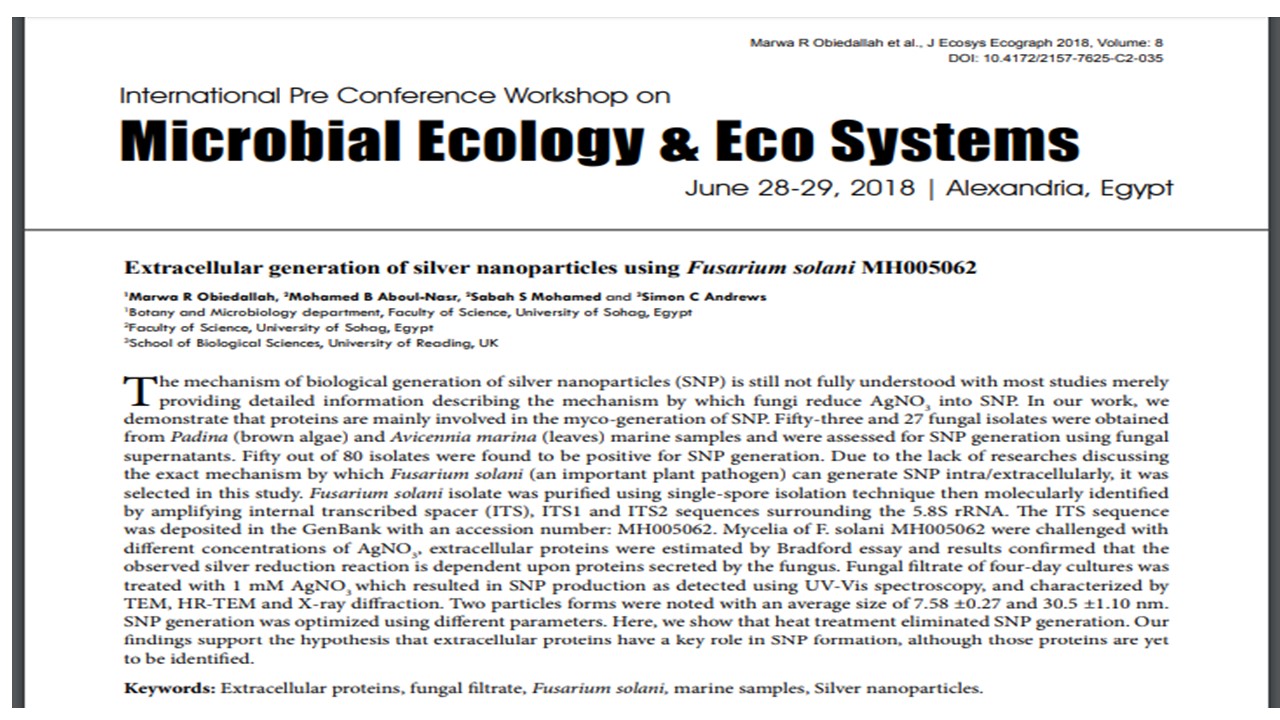The mechanism of biological generation of silver nanoparticles (SNP) is still not fully understood with most studies merely providing detailed information describing the mechanism by which fungi reduce AgNO3 into SNP. In our work, we demonstrate that proteins are mainly involved in the myco-generation of SNP. Fifty-three and 27 fungal isolates were obtained from Padina (brown algae) and Avicennia marina (leaves) marine samples and were assessed for SNP generation using fungal supernatants. Fifty out of 80 isolates were found to be positive for SNP generation. Due to the lack of researches discussing the exact mechanism by which Fusarium solani (an important plant pathogen) can generate SNP intra/extracellularly, it was selected in this study. Fusarium solani isolate was purified using single-spore isolation technique then molecularly identified by amplifying internal transcribed spacer (ITS), ITS1 and ITS2 sequences surrounding the 5.8S rRNA. The ITS sequence was deposited in the GenBank with an accession number: MH005062. Mycelia of F. solani MH005062 were challenged with different concentrations of AgNO3, extracellular proteins were estimated by Bradford essay and results confirmed that the observed silver reduction reaction is dependent upon proteins secreted by the fungus. Fungal filtrate of four-day cultures was treated with 1 mM AgNO3 which resulted in SNP production as detected using UV-Vis spectroscopy, and characterized by TEM, HR-TEM and X-ray diffraction. Two particles forms were noted with an average size of 7.58 ±0.27 and 30.5 ±1.10 nm. SNP generation was optimized using different parameters. Here, we show that heat treatment eliminated SNP generation. Our findings support the hypothesis that extracellular proteins have a key role in SNP formation, although those proteins are yet to be identified


